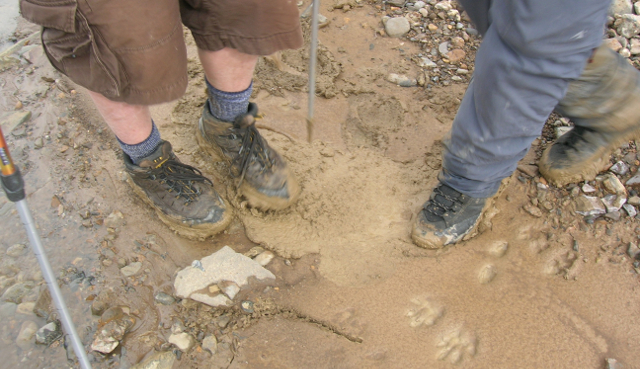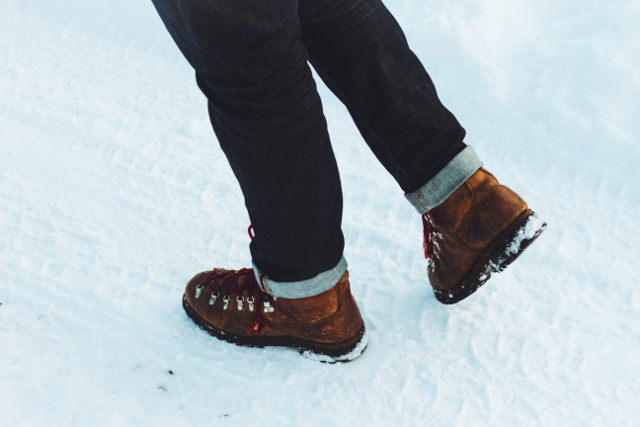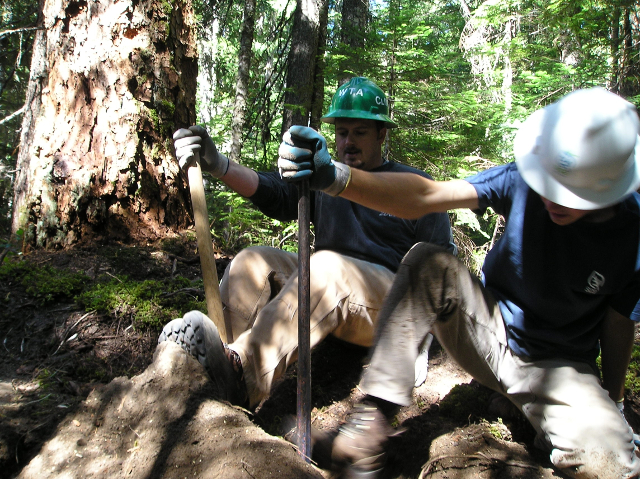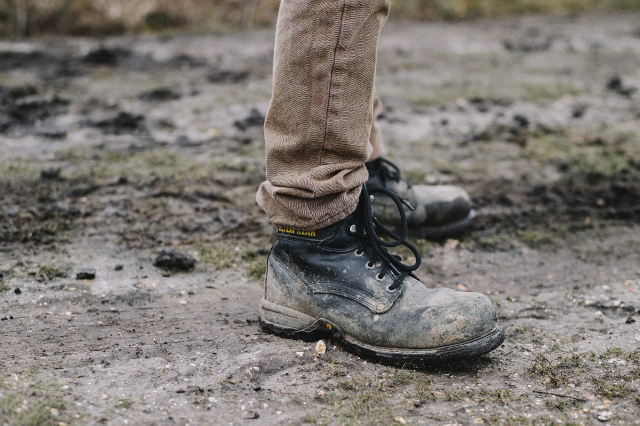
Photo by NPS
Many NatureOutside readers earn their living outdoors. They work as rangers, survival instructors, wilderness guides, and in a variety of other outdoor occupations. Guest author Mark Hedman writes about boots to protect your feet in the outdoors for people who work outside. You can learn more about our guest author by reading his profile below…
In your arsenal of foul-weather gear, your boots should rank near the top. Though they may not feel as sensitive as other parts of the body, your feet are susceptible to serious weather-related damage. This can range from frostbite and trench foot in sub-freezing temperatures to swollen feet and ankles in hot weather. Most likely, if you’re outside, you need your feet—to shovel snow, to do your job, to catch some epic air down the sledding hill. Thus, high-quality foot protection is vital anytime you head out in less-than-cozy weather conditions.

Photo by Ross Kohl on Unsplash
Why Take Extra Time to Protect the Feet?
It doesn’t matter if you work or play outside — you need to be sure you have appropriate foot protection for all weather. If you don’t, you put yourself in danger of developing the following conditions:
Trench Foot — In the winter, improperly protecting your feet could result in trench foot or immersion foot, a condition that occurs when your feet are exposed to wet, cold conditions for prolonged periods of time. According to the Occupational Safety and Health Administration (OSHA), trench foot can occur at temperatures as high as 60 degrees F, which means you need to focus on both warmth and dryness when developing your year-round foot protection plan.
Frostbite — Frostbite occurs when the skin freezes. It can strike in less than 30 minutes when wind chills dip below -16.5 F. If you work outside in regions where it gets this cold in winter — basically, the majority of the northern United States — then it’s important that you double-down on warm boots that keep cold air and moisture from coming into contact with your skin.
Swelling — The warm seasons bring problems of their own. Those who work outside in summer may experience swollen feet and ankles when temperatures spike. This is a common issue that occurs because heat causes the body’s blood vessels to expand, triggering swelling. This can prevent you from standing, running, or working in the heat.
Injuries — Unsurprisingly, injuries are more common when temperatures start to drop. According to Occupational Health & Safety, the number of slip-and-fall injuries rises dramatically when there’s snow and ice on the ground. Wearing properly sized boots with plenty of grip and traction can help reduce your risk of weather-related injury.

Photo by NPS
Tips for Protecting Your Feet
The good news is that the above conditions are almost entirely preventable with the right footwear and safety precautions. Here are some of the best tips for devising a foot protection plan that excels:
Dress Like the Professionals — Although it may cost a bit more, you’ll get the best level of performance, quality, and longevity from boots made specifically for professionals who work outside in demanding conditions. For example, police boots are made of ultra-durable, all-weather materials that protect like your best pair of winter boots but perform like your favorite sneakers, so you can maintain your agility and speed —because cops need to be able to sprint on a dime. You can expect this level of premium quality by brands like Danner and Bates. Keep your eye out for boots labeled “tactical” or “duty” for warmth coupled with top-notch performance.
Focus on Fit — Arguably, fit is equally as important as warmth and protection. Ill-fitting shoes are some of the most common contributors to injuries, including sprains from little support and ingrown toenails, corns, and calluses from footwear that’s too small or too tight. Your all-weather performance boots should fit snugly but not tightly, with no slipping, sliding, or pressure at any point on your foot.
Don’t Skimp — Have you ever heard the rule: Never skimp on anything that separates you from the ground? Keep this in mind when you’re shopping for rugged, all-weather boots. You need boots that excel in warmth, traction, water-resistance, and comfort. And getting all of these things with a single pair will cost you more than $100. Signs of a good pair of performance winter work boots include a waterproof (not water-resistant) rating and anti-slip soles of man-made material.
Have a Separate Pair for Summer — If you work outside, hunt, hike, or tinker around the house with tools when it’s warm out, it’s key that you have a good pair of boots that protect your feet but don’t cause excess heat and sweating. Obviously, it doesn’t make sense to wear your triple-insulated winter boots when you’re mowing the lawn, so you should have a good pair of warm-weather work boots in your stash as well. Look for shoes that have breathable mesh and lightweight materials for summer wear.
Socks Matter — Depending on who you ask, socks may be even more important than the right pair of boots, especially when it comes to keeping feet warm and dry. They can also help ensure that your boots fit properly by adding more or less wiggle room inside. In extreme cold, be sure to select moisture-wicking socks made from insulating materials, such as merino wool or a high-performance synthetic. In hot weather, stick to performance synthetic materials, as wool tends to get saturated with sweat faster than man-made fibers.

Photo by Annie Spratt on Unsplash
Protecting Your Feet: The Takeaway
So, what’s the takeaway? Make sure that you spend time and a little extra money to protect your feet. This goes especially if you need warmth, comfort, and performance for work or outdoor adventuring. It will be well worth your while to have a pair of high-quality boots and socks when the unpleasant weather strikes. So be sure to do your due diligence before making this crucial apparel decision.

Happy Feet! (Photo by Daria Krav on Unsplash)
About the Author
Mark Hedman serves as the CEO for LA Police Gear. Mark oversees a little bit of everything, from product development to walking the dogs. Starting from the bottom, he worked his way up through all stages of the company. Mark loves animals and the outdoors. He tries to spend as much time at the range as possible or hanging out with the pups.
Related Articles on NatureOutside
Review: Xero Shoes DayLite Hiker – Do you Need Minimalist Hiking Boots?
How to Waste Money on Expensive Lightweight Gear
For fun facts and useful tips, join the free Bushcraft Newsletter.



Leave a Comment